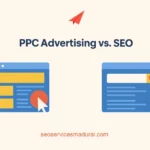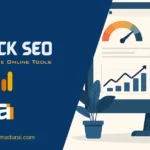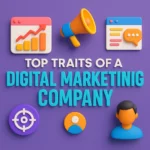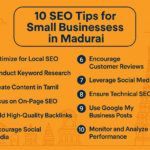The term “digital” was initially coined to describe high-definition television transmissions. Traditional advertising heavily relied on conventional media channels, and what we now identify as “digital” advertising seemed inconsequential to advertisers. In this article, we aim to explore the merits of both traditional and digital marketing methods.
Fast forward two decades, and today, a vast number of people worldwide use Google daily, making it imperative for businesses to prioritize maintaining a strong search ranking. Search engines play a crucial role in the positioning of digital advertisements, and current business data on social media advertising underscores the effectiveness of digital marketing.
Despite the widespread adoption and growth of digital advertising, numerous businesses still adhere to traditional advertising methods. Many individuals struggle to grasp the concept of digitalization, holding on to outdated marketing tactics. The familiarity of traditional advertisements, their proven track record, measurability, and comfort have contributed to their persistence.
Digital Marketing:
Digital marketing encompasses all online marketing efforts by a firm, including sponsored social media ads, email campaigns, and PPC advertising. Essentially, digital marketing involves leveraging digital platforms for marketing engagement, such as web pages and social media platforms. According to a report, approximately 3.2 billion people use social media platforms daily, explaining the recent surge in ads on these sites. During challenging times like the COVID-19 pandemic, digital marketing played a pivotal role in helping companies connect with customers, ensuring visibility even in a fully remote working environment.
Pros and Cons of Digital Marketing
Let’s begin by exploring the advantages of digital marketing:
Measurable Results:
Digital marketing provides a straightforward means of tracking campaign performance and gathering valuable insights. Analytical tools enable businesses to assess the success of their efforts.
Diverse Engagement Strategies:
Digital marketing offers a plethora of ways to engage audiences, such as surveys, contests, and referral codes. This versatility allows businesses to tailor their approaches to diverse consumer preferences.
Efficient Consumer Data Collection:
The process of collecting consumer information is streamlined through various analytical tools. This facilitates a better understanding of the target audience, leading to more effective and personalized marketing strategies.
Now, let’s delve into the disadvantages of digital marketing:
Constant Evolution:
Digital marketing is subject to constant change, with social media, search engine marketing, and other channels requiring specific expertise. Staying abreast of these changes and adapting strategies accordingly can be challenging.
Technology Breakdowns:
As digital marketing heavily relies on technology, unforeseen malfunctions can occur. Technical glitches or system failures may disrupt campaigns and necessitate swift troubleshooting.
Human Involvement:
Despite advancements in automation, effective digital marketing often requires significant human involvement. Skillful professionals are needed to navigate the complexities of digital platforms, analyze data, and make informed decisions.
Digital Marketing Platforms:
Digital marketing encompasses various platforms, each serving unique purposes. Some prominent platforms include:
Websites:
Company websites serve as central hubs for digital marketing efforts, providing a platform for information dissemination and customer interaction.
Email Marketing:
A highly engaging method, email marketing is utilized by 82% of users. It enables businesses to reach their audience directly and foster ongoing communication.
Search Engine Marketing (SEM):
SEM involves optimizing a website’s visibility on search engine results pages through strategies like pay-per-click advertising.
Affiliate Marketing:
This involves partnerships with affiliates who promote a company’s products or services in exchange for a commission on sales.
Social Media:
Utilized by approximately 42% of users, social media platforms are powerful tools for building brand presence, engaging audiences, and facilitating communication.
Definition of Traditional Marketing:
Traditional marketing encompasses any form of advertising conducted offline. This method, spanning from print to radio, allows for targeted outreach to consumers. Examples include print media, radio broadcasts, direct mail, telephones, and outdoor advertising like banners. Regarded as one of the oldest and most extensively explored marketing approaches, traditional marketing is favoured by advertisers for its proven and reliable nature. People encounter traditional marketing in their daily lives, whether through mail or newspapers.
Traditional Marketing vs. Digital Marketing:
Advantages of Traditional Marketing:
Endurance and Tangibility:
Experiencing something in the physical realm, as opposed to on a smartphone, increases the likelihood of remembering it. Traditional marketing materials, such as promotional printed items (leaflets, posters, pamphlets, and brochures), are tangible and can be easily retained and repurposed.
Insightful and Easy to Understand:
Traditional marketing is visually appealing, compelling, and seamlessly integrated into people’s everyday lives. It is straightforward to comprehend as it aligns with common occurrences.
Disadvantages of Traditional Marketing:
Costly:
Traditional marketing methods can be expensive, making them challenging for new brands with limited budgets. For instance, a full-page magazine ad may be financially impractical for a startup.
Irreversibility:
Once executed, traditional marketing efforts are challenging to modify. Mistakes, such as errors in a radio advert or printing incorrect price values on flyers, cannot be easily rectified.
Traditional Marketing Platforms:
Posters: Visual displays for public advertising.
Television: Traditional broadcasting channels for commercials and promotional content.
Flyers: Printed materials distributed to a target audience.
Newspapers: Still followed by around 56% of people, newspapers provide a traditional avenue for advertising.
Radio: Audio broadcasts used for promotions and advertisements.
Text Messages: Direct communication through text messaging for marketing purposes.
Billboards: Large outdoor displays, followed by approximately 77% of people.
Magazines: Print publications used for targeted advertising and promotions.
Traditional Marketing vs. Digital Marketing – Navigating the Post-Pandemic Landscape
Traditional marketing methods have undeniably proven their efficacy in the past, particularly for small businesses targeting local audiences. However, the pandemic has catapulted digital marketing to unprecedented heights, transforming it into an indispensable element for businesses of all sizes. According to a report, 49% of global consumers now prefer online shopping post-pandemic, with the US witnessing a remarkable 62% surge in online customers during this period.
Digital marketing offers the unique advantage of connecting with a broader audience than physical outreach allows. In a world confined by the pandemic, smartphones and the internet have become essential, providing a seamless means to reach those in need of your offerings. Compared to traditional advertising, running ads on social media proves to be more cost-effective. Moreover, monitoring your brand’s reach and audience interaction has become more accessible than ever. This opportune time is ideal for initiating or enhancing online social media marketing campaigns, as VisaVisa reports that 25% of internet-based shopping is conducted through various social media platforms.
Smaller businesses, in particular, benefit significantly from digital marketing. They can effectively compete with global brands in their local markets by leveraging powerful demographic-based marketing strategies and personalizing their approach. Overall, internet-based marketing aligns more closely with the demands of today’s world, offering numerous advantages over traditional modes.
In conclusion, both traditional and digital marketing methods come with their respective pros and cons. The key lies in understanding your unique marketing needs, financial constraints, and target demographic. This article aims to emphasize that by comprehending your customers’ desires, both traditional and digital marketing approaches can work synergistically for you. However, given the current trends, the digital market is undoubtedly paving the way for enhanced engagement and improved revenue growth prospects.











